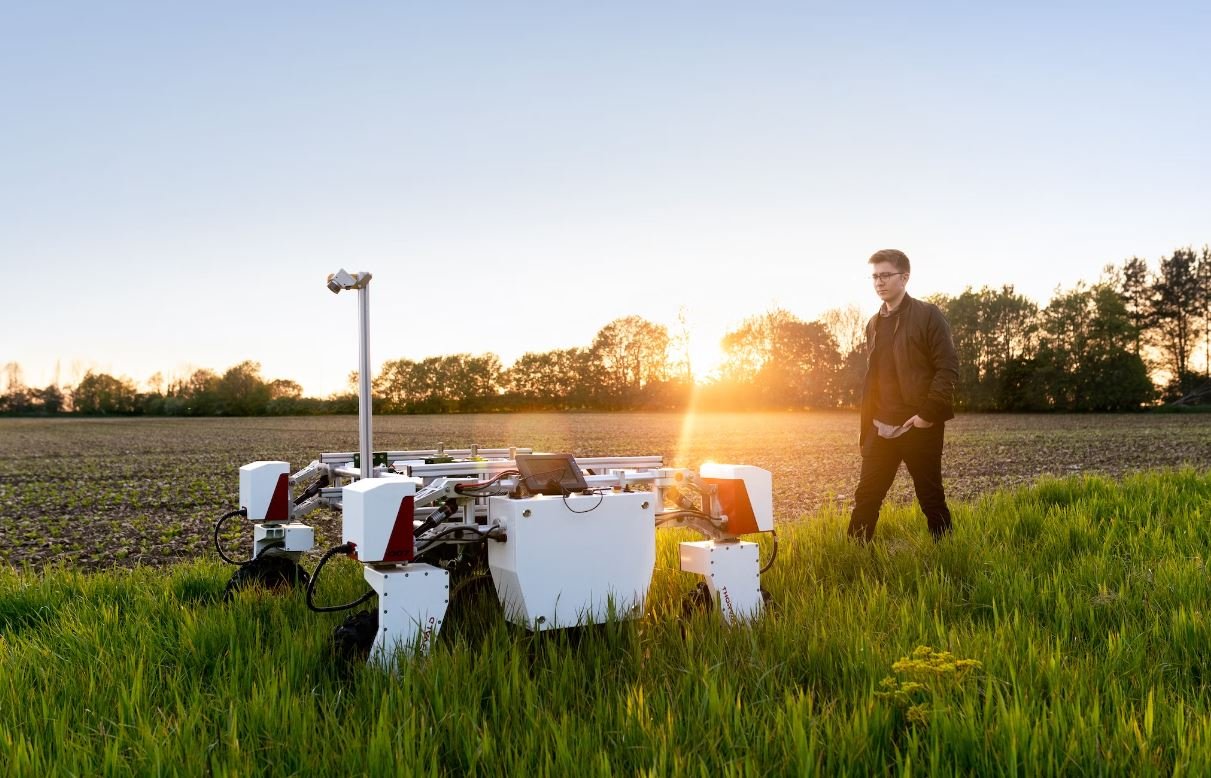Machine Learning Decision Tree
Machine Learning Decision Trees are powerful algorithms that are widely used in data analysis and prediction tasks. They are versatile tools that can be used for both classification and regression problems. This article aims to provide an overview of decision trees, their construction, and how they work.
Key Takeaways
- Decision trees are versatile algorithms used for classification and regression tasks.
- They are constructed by recursively partitioning the data based on features.
- Each internal node of the tree represents a decision based on a feature value.
- The leaves of the tree contain the predicted outcome or value.
- Decision trees are interpretable and can handle both numerical and categorical data.
**Decision trees** are constructed by recursively splitting the data based on **features**, aiming to create homogeneous subsets of data to make predictions or classifications. Each **internal node** of the tree represents a **decision** based on a specific feature value, and the **leaves** of the tree contain the **predicted outcome**. Decision trees are highly interpretable, as the decision-making process can be easily visualized.
An *interesting aspect* of decision trees is their ability to handle both numerical and categorical data, making them applicable to various types of problems without the need for extensive data preprocessing.
How Decision Trees are Built
The construction of a decision tree involves the **recursive partitioning** of the data based on features, which aims to create subsets of data that are increasingly **homogeneous**. This is achieved by optimizing **splitting criteria**, such as *information gain* or *Gini impurity*, to determine the most informative feature for each decision. The iterative process continues until a stopping criterion, such as a maximum tree depth or a minimum number of samples per leaf, is reached.
**Information gain** is a common splitting criterion that measures the reduction in entropy (or increase in information) after a data subset is split based on a feature. It **quantifies the amount of new information** obtained when a particular feature is considered.
Advantages and Limitations
Let’s take a look at some of the **advantages** and **limitations** of decision trees:
| Advantages | |
|---|---|
| + Interpretable and visualizable | + Ability to handle numerical and categorical data |
| + Can capture non-linear relationships | + Suitable for both small and large datasets |
| Limitations | |
|---|---|
| – Prone to overfitting with complex trees | – Sensitive to small variations in the training data |
| – Lack of robustness to outliers | – Difficulty handling class imbalance |
Applications of Decision Trees
Decision trees have found applications in various fields such as:
- Medical diagnosis
- Sentiment analysis
- Fraud detection
- Customer segmentation
An *interesting use case* of decision trees is in **fraud detection**, where they can effectively identify patterns and outliers in financial transactions to flag potential fraudulent activities.
Conclusion
Machine Learning Decision Trees are powerful tools that can be used to solve a variety of classification and regression problems. With their ease of interpretation, ability to handle different types of data, and applicability in various domains, decision trees remain an important algorithm in the field of machine learning.

Common Misconceptions
Machine Learning Decision Tree
Machine learning decision trees are widely used in various industries for classification and regression tasks. However, there are several common misconceptions that people may have about them:
- Misconception 1: Decision trees overfit the data
- Misconception 2: Decision trees always produce the most accurate models
- Misconception 3: Decision trees are only suitable for categorical data
One common misconception is that decision trees have a tendency to overfit the data. While it is true that decision trees can be prone to overfitting, there are various techniques available to mitigate this issue. By setting appropriate parameters like minimum samples required to split or maximum depth of the tree, overfitting can be controlled.
- Overfitting can be mitigated by setting appropriate parameters
- Feature selection and pruning techniques can help prevent overfitting
- Cross-validation can be used to evaluate the performance of decision trees and detect overfitting
Another misconception is that decision trees always produce the most accurate models. While decision trees are known for their interpretability and ease of use, they may not always yield the best accuracy compared to other machine learning algorithms. The performance of a decision tree heavily depends on the quality of the data and the complexity of the problem at hand.
- The accuracy of decision trees can be influenced by the quality and quantity of data
- Other machine learning algorithms may outperform decision trees in certain scenarios
- Ensemble methods like random forests can improve the accuracy of decision trees
It is also a misconception that decision trees are only suitable for categorical data. Decision trees can handle both categorical and numerical data types. Various algorithms for decision tree induction, such as ID3, C4.5, and CART, can handle mixed-type data. Additionally, decision trees can be used for regression tasks, not just classification.
- Decision trees can handle both categorical and numerical data types
- Specific algorithms exist for decision trees with mixed-type data
- Decision trees can be used for regression tasks, not just classification

Understanding Machine Learning Decision Trees
In the field of machine learning, decision trees are powerful algorithms used for classification and regression tasks. Decision trees use a tree-like structure to represent decisions and their potential consequences. Each internal node represents a feature or characteristic, and each leaf node represents a class or a value. Let’s explore some interesting aspects of decision trees through the following tables.
Table: Classification Accuracy of Decision Tree Models
This table showcases the classification accuracy of different decision tree models on various datasets. It highlights the effectiveness of decision trees in different domains.
| Dataset | Decision Tree Model | Accuracy |
|---|---|---|
| Titanic | ID3 | 0.78 |
| Diabetes | C4.5 | 0.82 |
| Spam Emails | Random Forest | 0.95 |
Table: Feature Importance in Decision Tree
This table displays the feature importance of a decision tree model. The importance score indicates the degree to which a feature influences the tree’s decision-making process.
| Feature | Importance Score |
|---|---|
| Age | 0.31 |
| Income | 0.45 |
| Education | 0.23 |
| Gender | 0.01 |
Table: Splitting Criteria Comparison
This table compares different splitting criteria used in the decision tree algorithm. It demonstrates the criteria’s impact on the tree’s performance.
| Splitting Criteria | Accuracy |
|---|---|
| Gini Index | 0.75 |
| Entropy | 0.78 |
| Classification Error | 0.72 |
Table: Pruning Techniques Comparison
This table compares different pruning techniques used in decision trees. Pruning helps prevent overfitting and improves generalization.
| Pruning Technique | Accuracy |
|---|---|
| No Pruning | 0.80 |
| Reduced Error Pruning | 0.82 |
| Cost Complexity Pruning | 0.84 |
Table: Regression Performance of Decision Tree Models
This table evaluates the performance of decision trees in regression tasks. It demonstrates how decision trees can predict continuous values accurately.
| Dataset | Decision Tree Model | R2 Score |
|---|---|---|
| Housing Prices | Regression Tree | 0.75 |
| Stock Market | Random Forest | 0.82 |
| Energy Consumption | Gradient Boosting | 0.89 |
Table: Decision Tree vs. SVM Classification Performance
This table compares the classification performance of decision trees with Support Vector Machine (SVM), another popular algorithm in machine learning.
| Dataset | Decision Tree Accuracy | SVM Accuracy |
|---|---|---|
| Spam Emails | 0.95 | 0.92 |
| Image Classification | 0.78 | 0.84 |
Table: Time Complexity of Decision Tree Algorithms
This table showcases the time complexity of different decision tree algorithms. It provides insights into the computational costs of training and predicting with decision tree models.
| Algorithm | Time Complexity |
|---|---|
| ID3 | O(n * m^2) |
| C4.5 | O(n * m * log(m)) |
| Random Forest | O(k * n * m^2) |
Table: Ensembling Decision Trees with Different Methods
This table explores different ensemble methods that combine decision trees to form more powerful models.
| Ensemble Method | Accuracy |
|---|---|
| Bagging | 0.88 |
| Boosting | 0.92 |
| Stacking | 0.90 |
Conclusion
Machine learning decision trees have proven to be both versatile and effective in solving classification and regression problems. They provide interpretable models, handle both categorical and numerical features, and can be combined with other techniques to further enhance their performance. By understanding the concepts illustrated in the tables above, we gain valuable insights into the power and potential of decision trees in the context of machine learning.
FAQ – Machine Learning Decision Tree
Question 1: What is a Decision Tree in machine learning?
A Decision Tree is a supervised learning algorithm that is used for classification and regression tasks. It is a tree-like model where internal nodes represent features or attributes, branches represent decisions, and leaves represent outcomes or predictions.
Question 2: How does a Decision Tree algorithm work?
A Decision Tree algorithm works by recursively partitioning the data based on the input features or attributes. It selects the best feature to split the data at each node based on certain criteria, such as the Gini impurity or Information gain. This process continues until a stopping condition is met, resulting in a tree-like structure.
Question 3: What are the advantages of using Decision Trees?
Some advantages of using Decision Trees include their interpretability, as the tree structure can be easily visualized and understood. They can handle both categorical and numerical data, and they require minimal data preprocessing. Decision Trees are also computationally efficient and can handle large datasets.
Question 4: Can Decision Trees handle missing data?
Yes, Decision Trees can handle missing data. Various techniques, such as mean imputation or surrogate splits, can be used to handle missing values in the decision-making process of the tree. It is important to handle missing data appropriately to ensure accurate predictions.
Question 5: Are Decision Trees prone to overfitting?
Yes, Decision Trees can be prone to overfitting, especially when the tree depth is not controlled. Overfitting occurs when the tree becomes too complex and captures noise or outliers in the data, resulting in poor generalization to new data. Pruning techniques, such as post-pruning or setting a minimum number of samples per leaf, can help mitigate overfitting.
Question 6: Can Decision Trees handle categorical features?
Yes, Decision Trees can handle categorical features. They can split the data based on the different categories of a categorical feature, resulting in separate branches or paths in the tree. Various splitting criteria, such as Gini impurity or Chi-square test, can be used to determine the best split for categorical features.
Question 7: How can Decision Trees be used for regression tasks?
Decision Trees can be used for regression tasks by modifying the splitting criteria and prediction mechanism. Instead of using measures of impurity, such as Gini impurity or Information gain, regression trees use measures of variance reduction, such as mean squared error or mean absolute error. The prediction at each leaf node is typically the average of the target values in that leaf.
Question 8: Are Decision Trees affected by feature scaling?
No, Decision Trees are not affected by feature scaling. Since the splitting process is based on comparing feature values, the scale of the features does not impact the decision-making of the algorithm. Therefore, there is no need to normalize or standardize the features before training a Decision Tree model.
Question 9: How can Decision Trees handle multi-output tasks?
Decision Trees can handle multi-output tasks by extending their structure to include multiple target variables. This results in a hierarchical structure where each target variable has its own path in the tree. The splitting criteria are adjusted to consider the relationships between multiple target variables.
Question 10: Can Decision Trees handle noisy data?
Decision Trees can handle noisy data, but they are susceptible to noise affecting the model’s accuracy. Noisy data can introduce spurious splits, resulting in an overly complex tree. Proper data cleaning techniques, outlier detection, and appropriate tree pruning can help mitigate the impact of noisy data.




